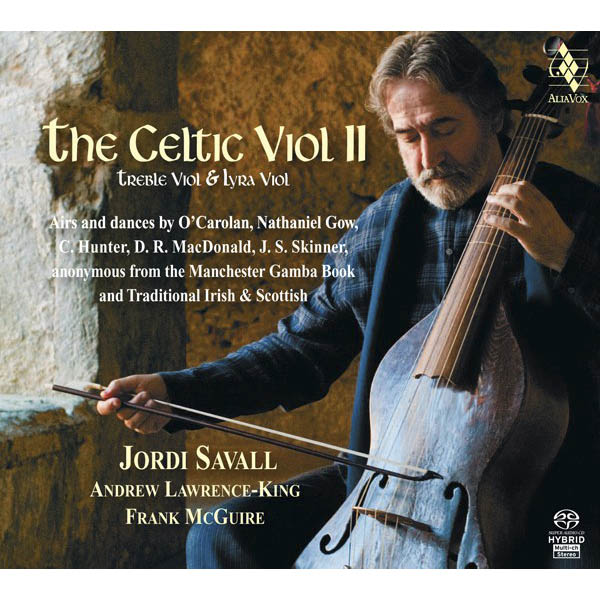THE CELTIC VIOL II
Treble Viol & Lyra Viol
Jordi Savall
17,99€
Reference: AVSA9878
- Jordi Savall
- Andrew Lawrence-King
- Frank McGuire
The Celtic repertoire is currently preserved through very different performance styles or trends; on the one hand, there are those musicians who continue to study and perform the repertoire in a strictly traditional way; on the other hand, there is a body of musicians who, since the 1970s, have drawn inspiration from a “new traditional” musical style developed by such pioneering groups as The Chieftains and Ceoltóirí Chualann. Finally, there are the musicians who from the 1980s have transformed those traditions into “marketable, modern and syncretic forms.”
Every work of art is the child of its time and also,
very often, the mother of our emotions.Wassily Kandinsky
Concerning the Spiritual in Art, Munich, 1912
As I recalled in my essay “In praise of transmission”, which accompanied our first recording devoted to The Celtic Viol, “unlike some Oriental cultures which have evolved chiefly within an oral tradition, in the West only those types of music commonly known as traditional, popular or folk music have been preserved thanks to unwritten means of transmission. Just as the face is the mirror of the soul, a people’s music is the reflection of the spirit of its identity, individual in origin but taking shape over time as the collective image of a cultural space that is unique and specific to that people. All music passed on and preserved by the oral tradition is the result of a felicitous survival following a long process of selection and synthesis.” These processes of transmission are also paths of evolution, innovation and, therefore, paths of transformation by which they undergo the diverse influences of other musical styles that are foreign, modern or even very remote in origin, resulting in new and equally legitimate forms of interpretation.
The Celtic repertoire is currently preserved through very different performance styles or trends; on the one hand, there are those musicians who continue to study and perform the repertoire in a strictly traditional way; on the other hand, there is a body of musicians who, since the 1970s, have drawn inspiration from a “new traditional” musical style developed by such pioneering groups as The Chieftains and Ceoltóirí Chualann. Finally, there are the musicians who from the 1980s have transformed those traditions into “marketable, modern and syncretic forms.” The largest-scale phenomena in the internationalizing of Irish and Scottish music and dance were the megashows Riverdance, Lord of the Dance and Black 47. Tradition and innovation are closely interwoven with the performances of Lúnasa (live recordings at the Towne Crier Café in Pawling. New York, July 2003.) All these groups demonstrate new paths in which Celtic music is being refashioned and syncretised on the concert stage. Some feel these developments reveal the adaptability of the tradition, while others view commercializing endeavours as tangential: “In recent decades there have been a number of musical developments that have proved to be both offshoots of the main stem of traditional music and cul-de-sac from it: the introduction of electric instruments, the introduction of rock-music styles, and the introduction of other ethnic styles of performance.” (Nicholas Carolan. Director of the Irish Traditional Music Archive in Dublin. Carolan 2000).
+ information in the CD booklet
JORDI SAVALL
Fontfroide Abbey (France), 29th July, 2010
Translated by Jacqueline Minett







Share